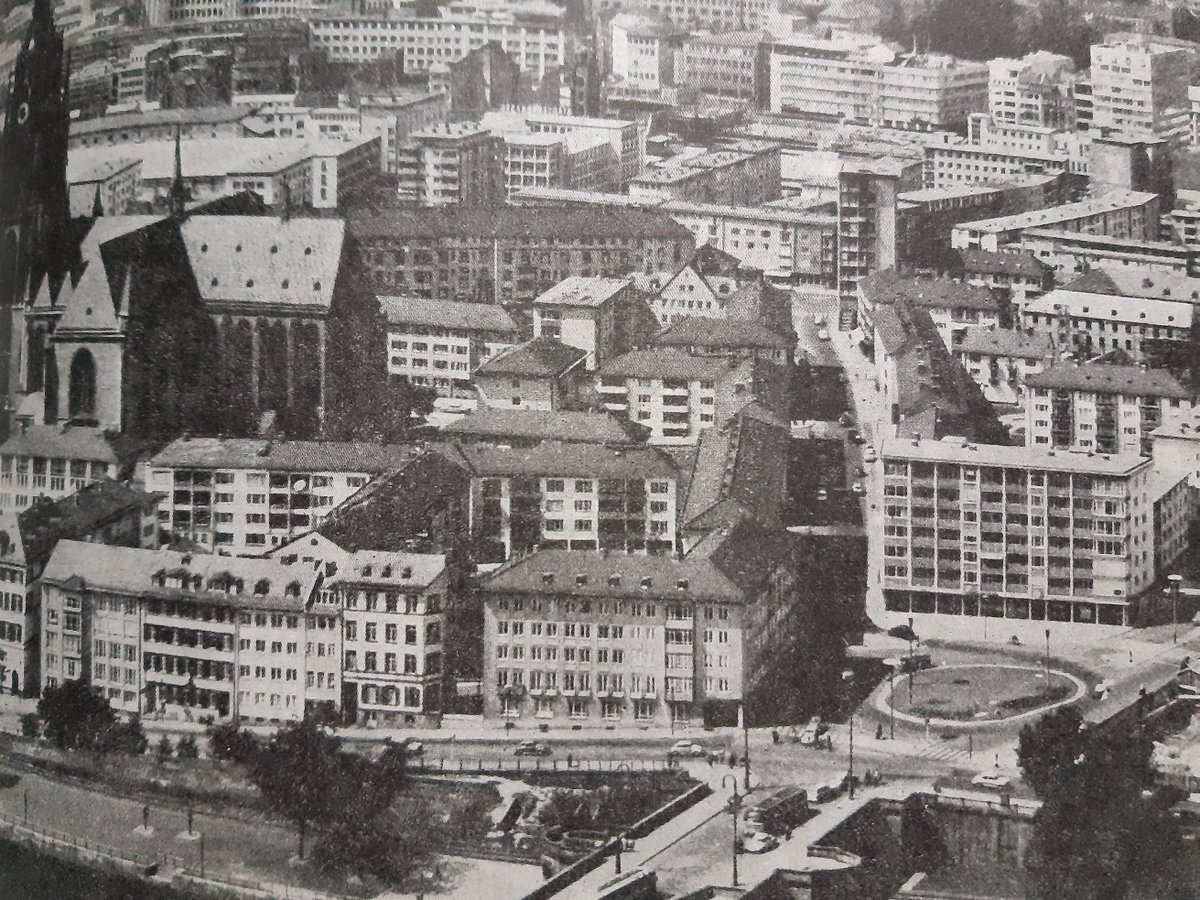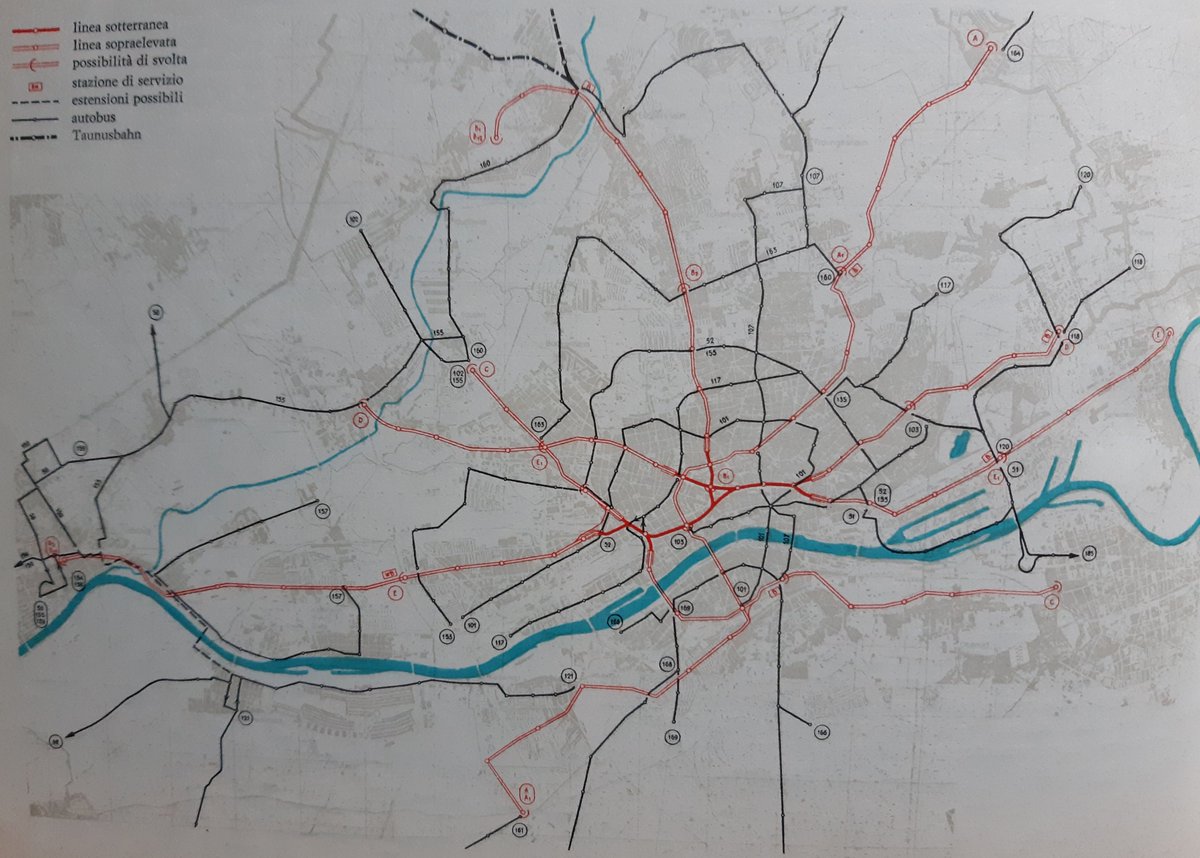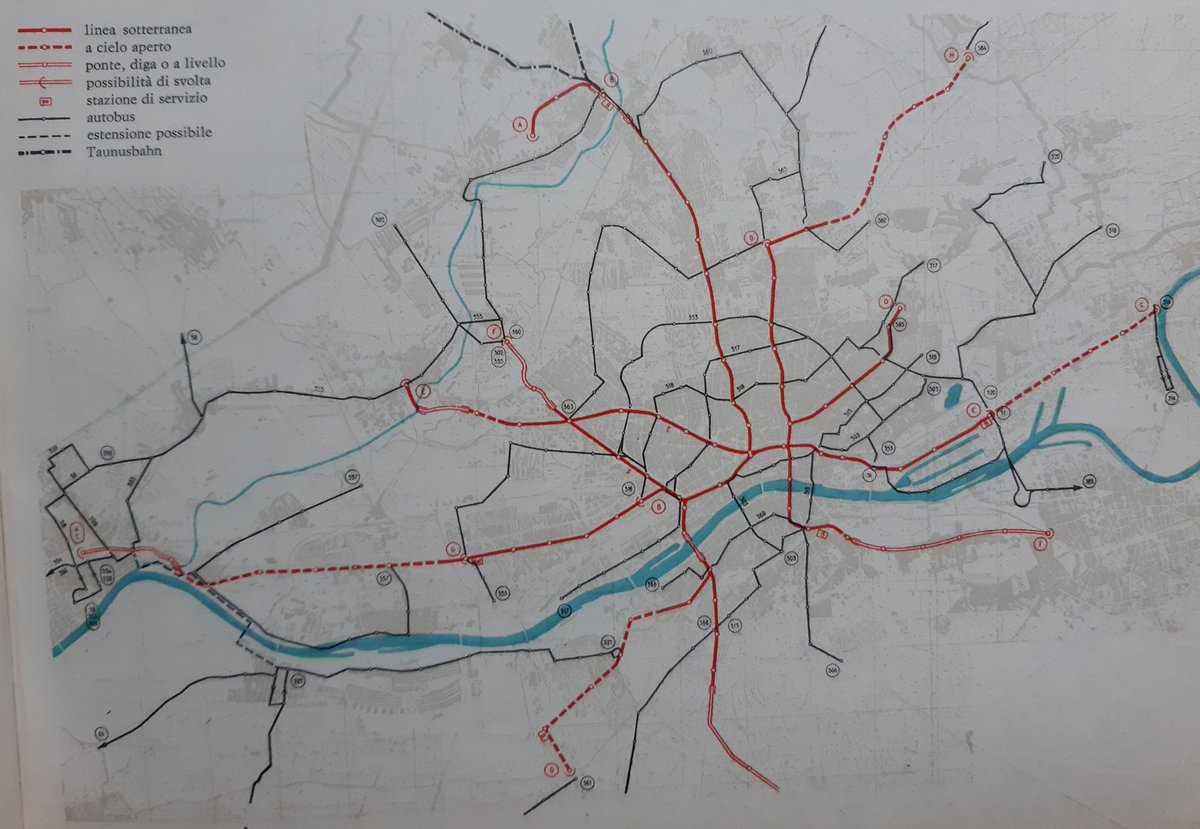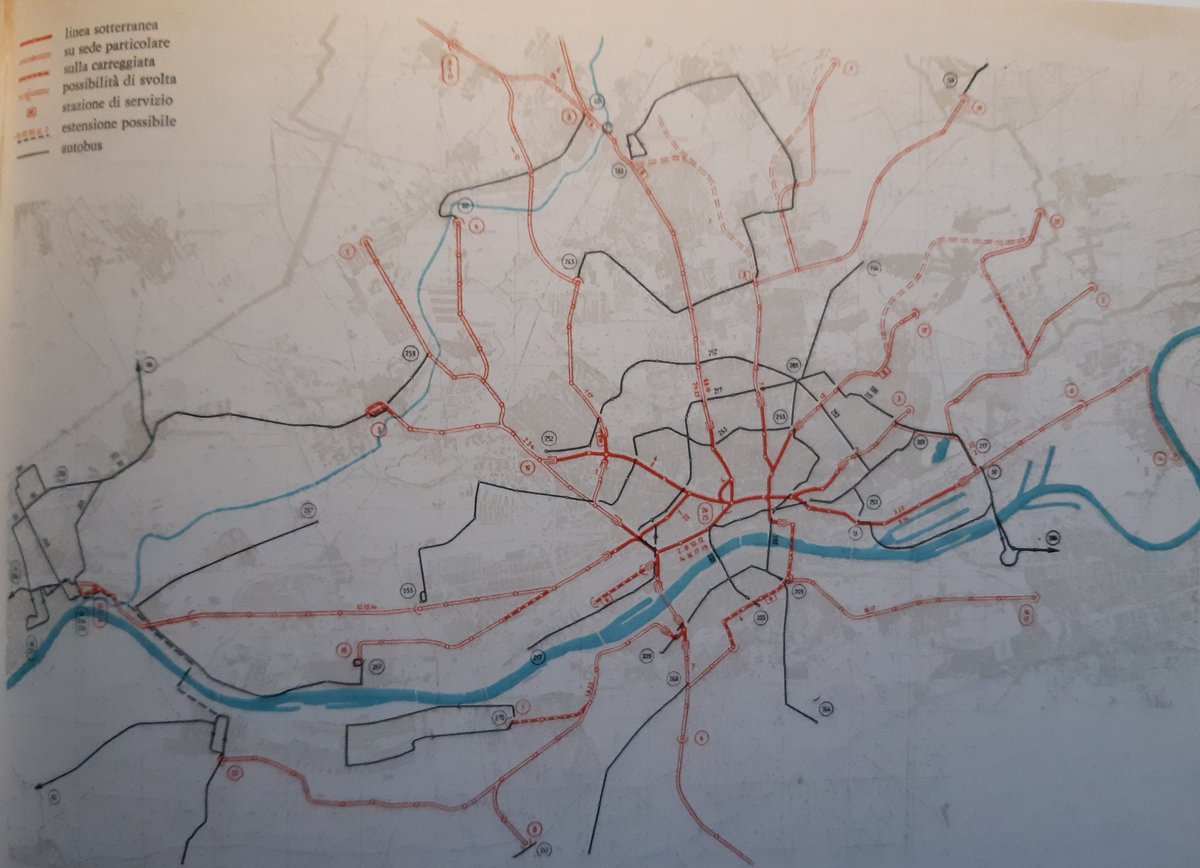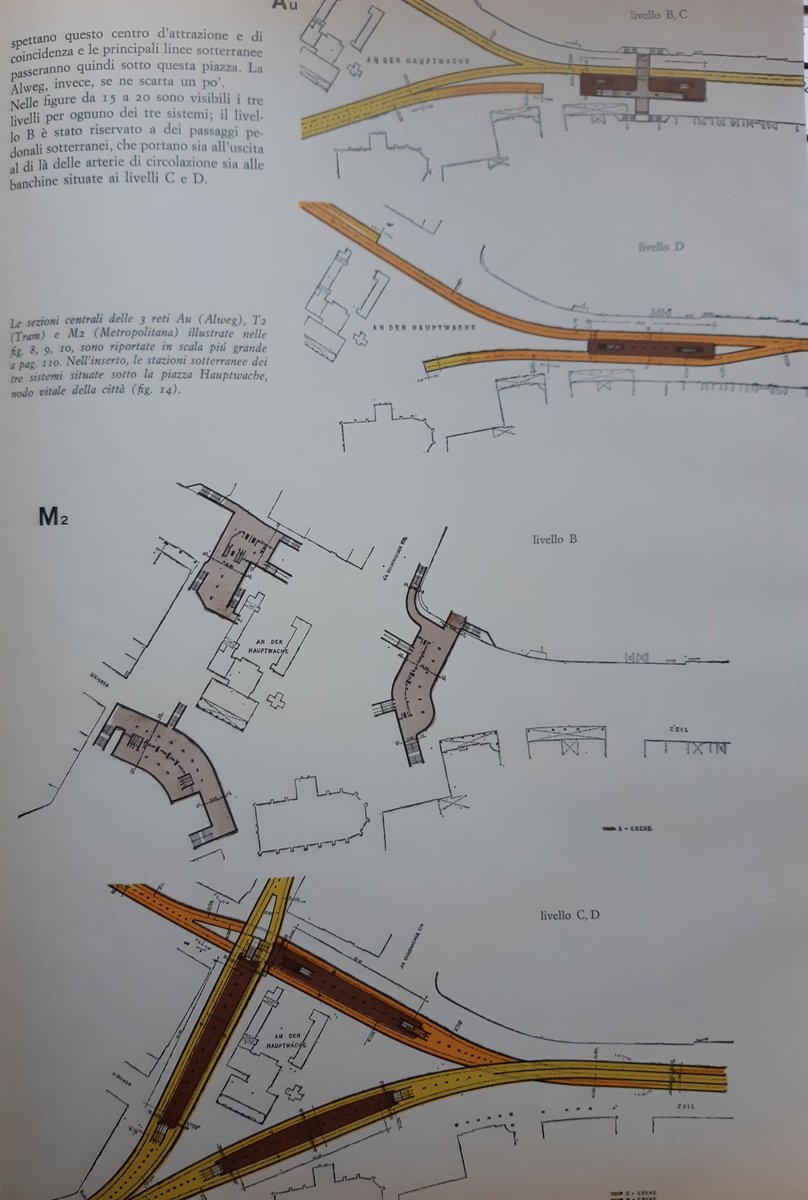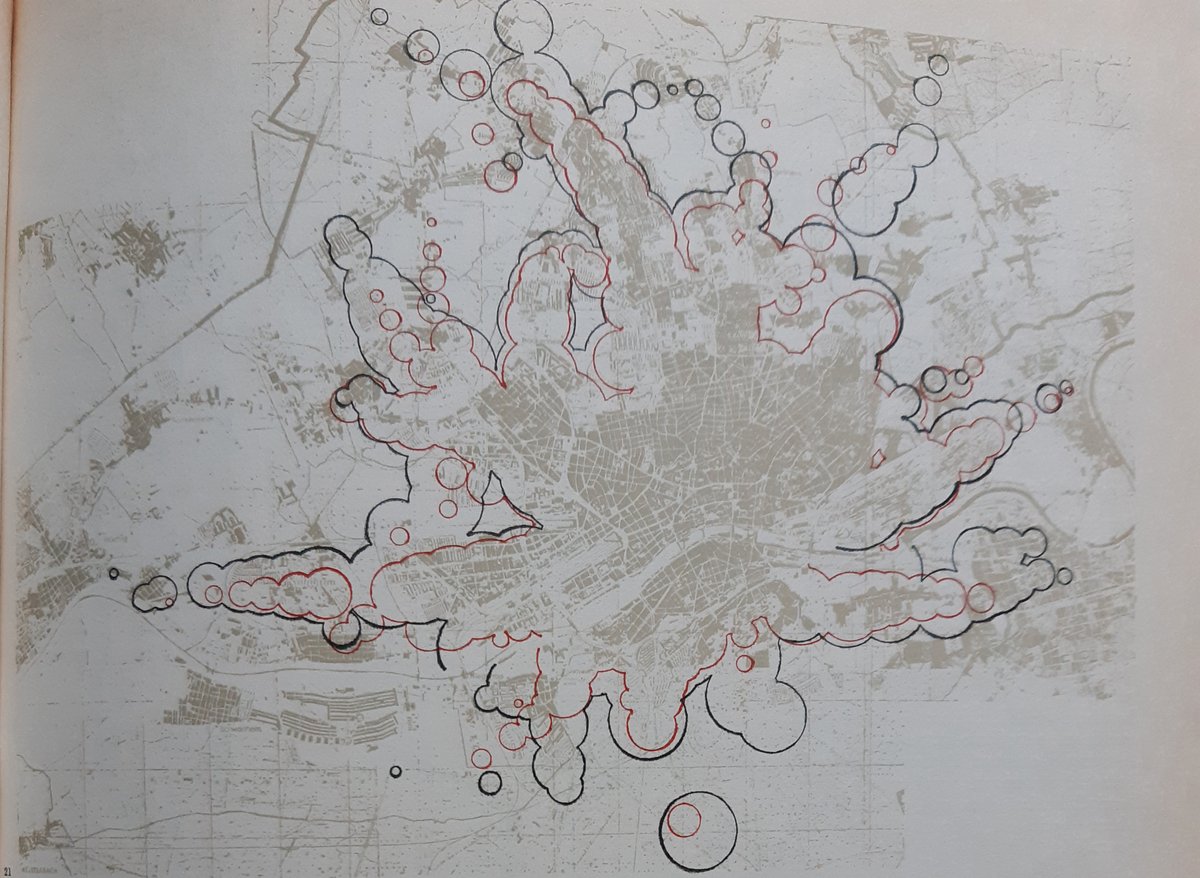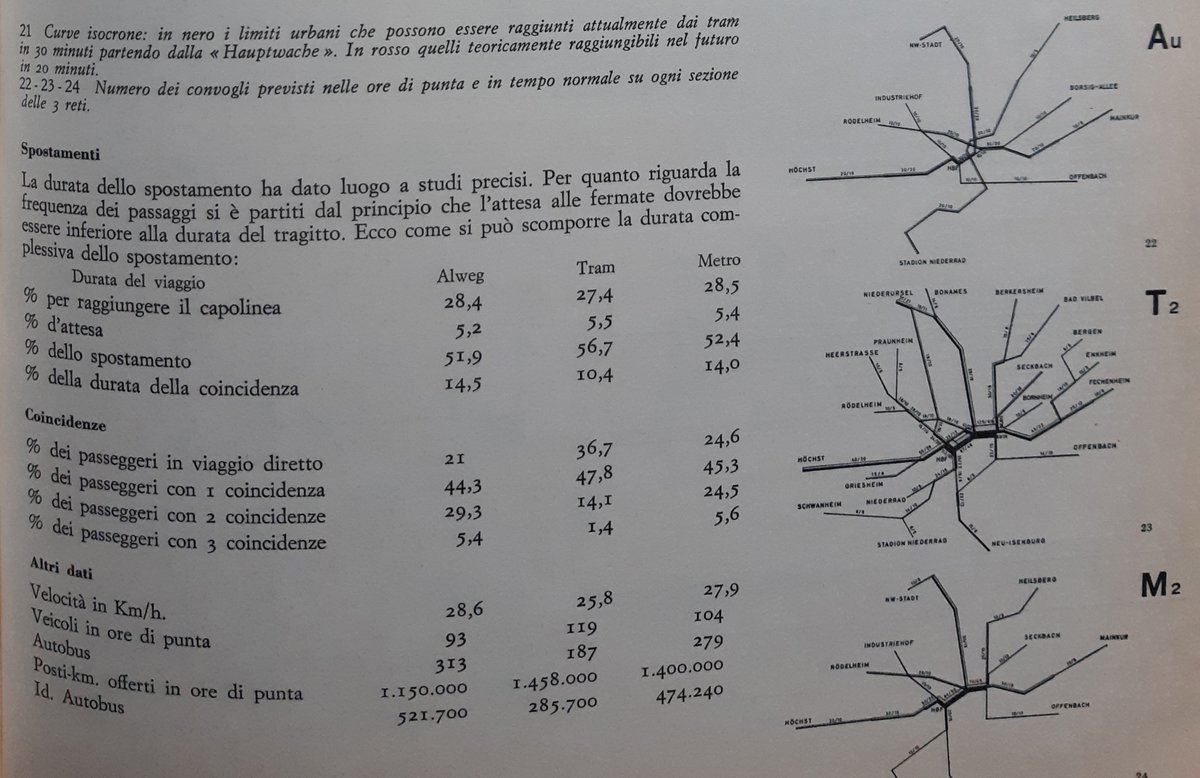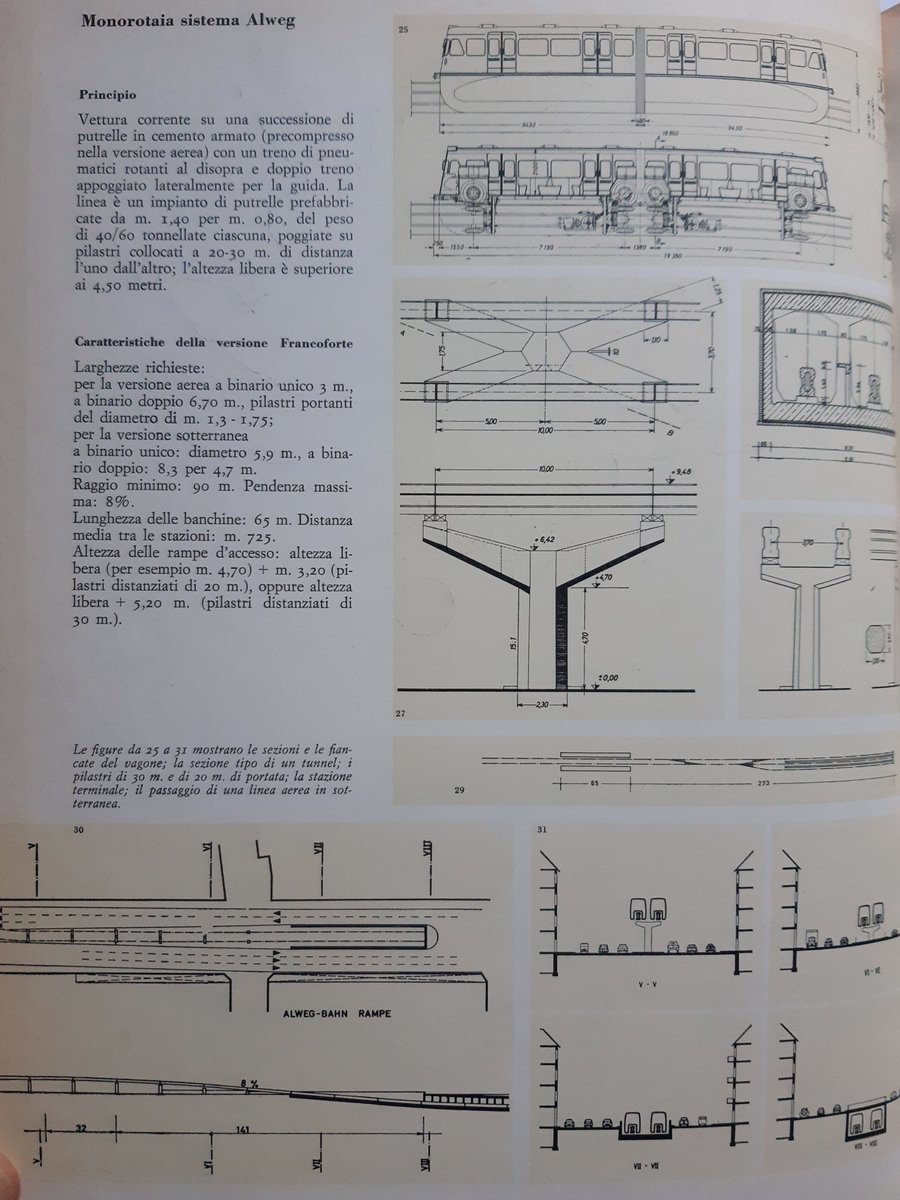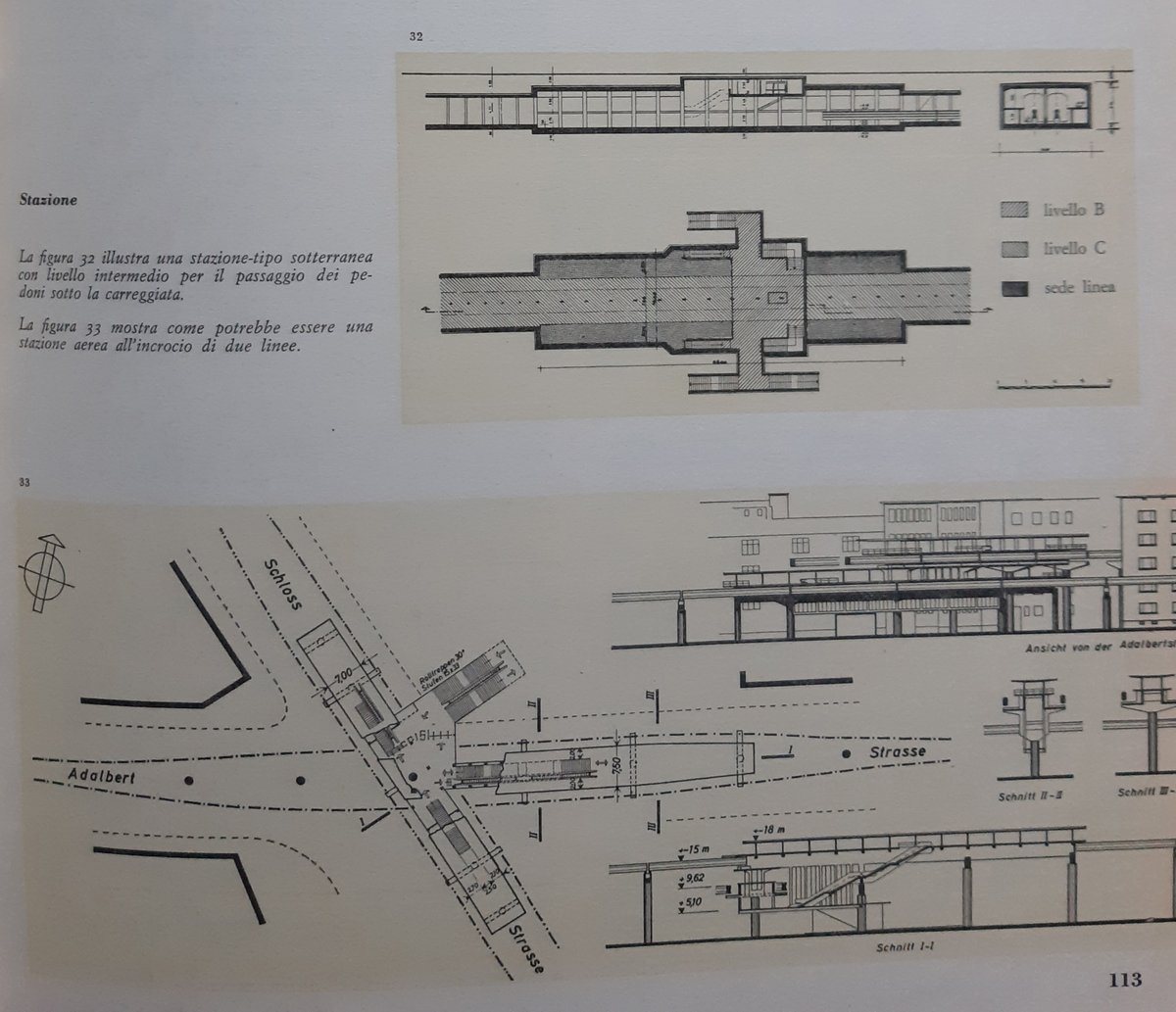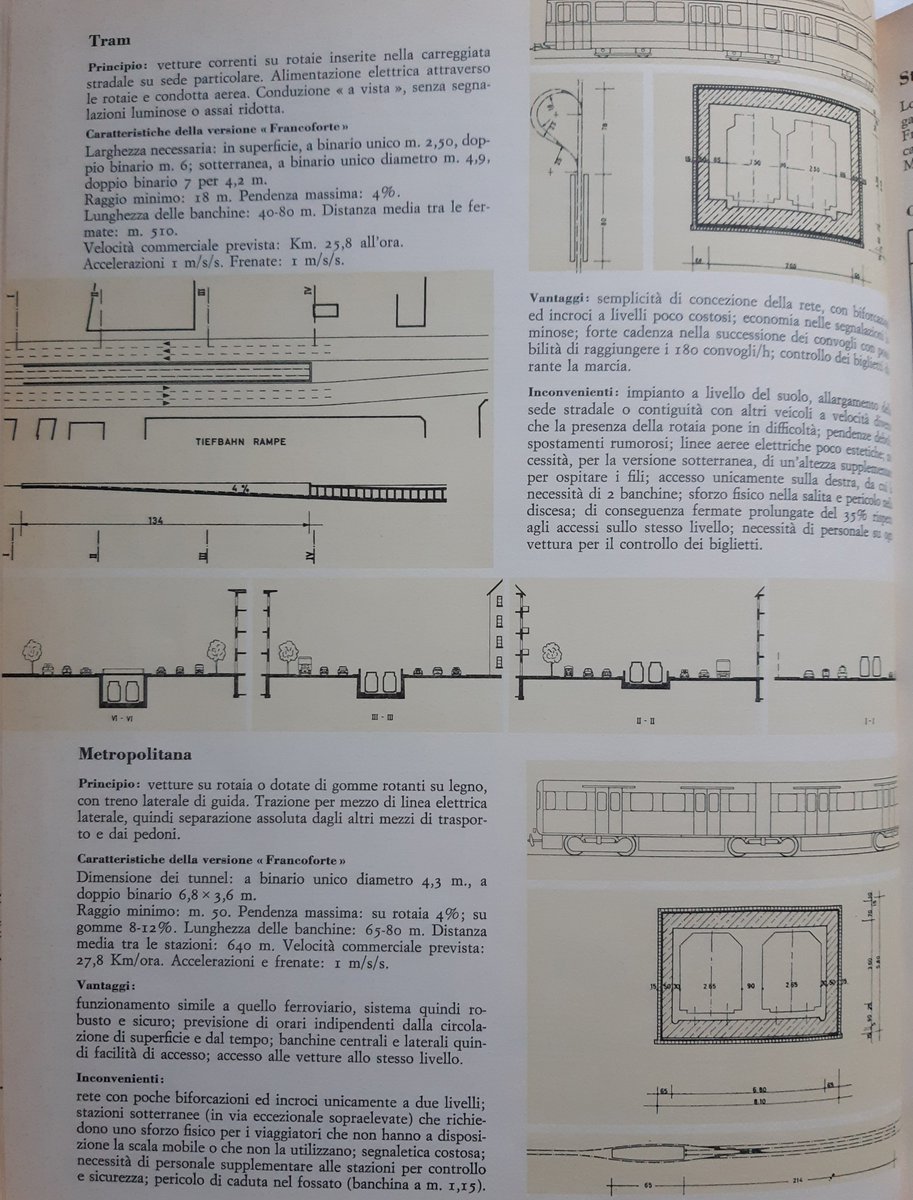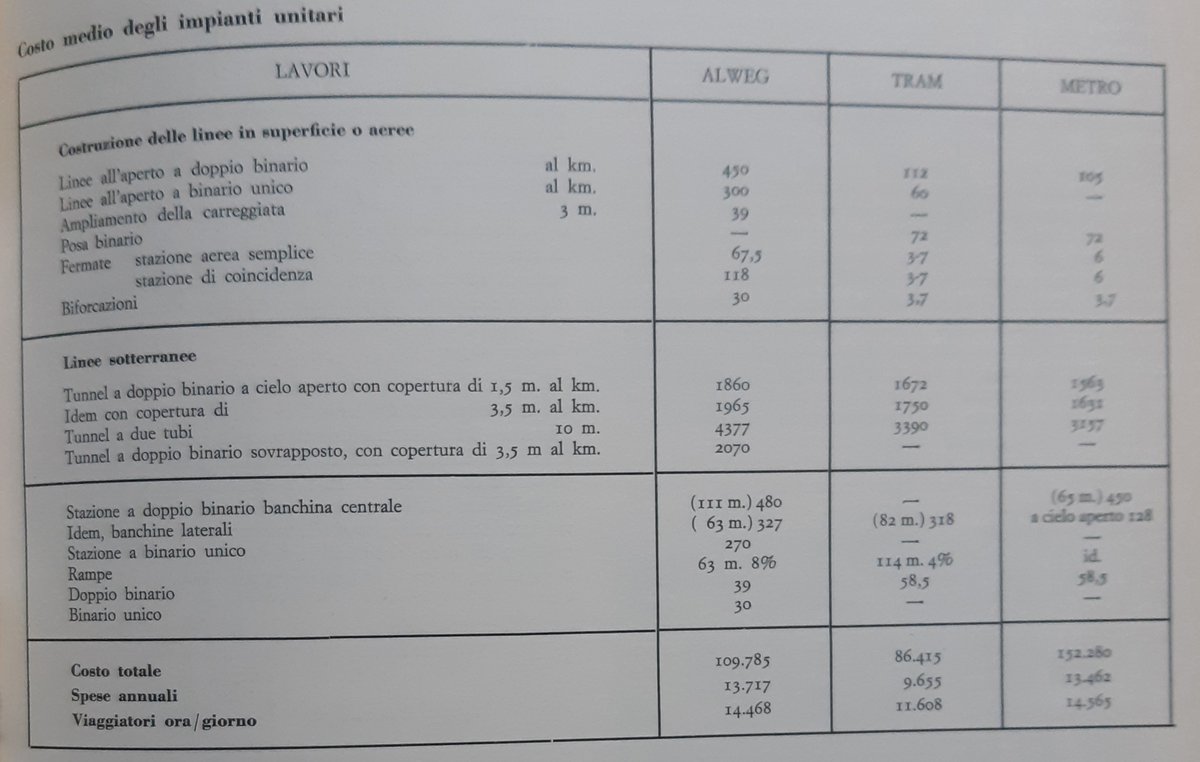/1 “How can we possibly plan without big data?!”
An answer from a comparative study on the reorganisation of Frankfurt-am-Mein’s transit system as published on the Italian journal “Urbanistica” in 1964. A thread on the archeology of transit planning, again.
An answer from a comparative study on the reorganisation of Frankfurt-am-Mein’s transit system as published on the Italian journal “Urbanistica” in 1964. A thread on the archeology of transit planning, again.
2/ As Frankfurt was forecasting an important population growth in the postwar recovery, the city commissioned a study to reorganize its transit system, then based solely on tramways (see image). There were 3 main options:
- Alweg (Monorail)
- Full metro
- Pre-metro
- Alweg (Monorail)
- Full metro
- Pre-metro
3/ The “Alweg” monorail option: a 67.5 km network composed of 9 mainly elevated lines with short u/g stretches in the city center (full red); a complementary bus network (black lines)
4/ The full Metro option: 63.2 km (half u/g, full red) network; a complementary bus network (black lines)
5/ The Pre-metro (Stadtbahn) option: 103.1 km, 21 km u/g (full red), short sections in mixed traffic (dotted) and the rest in dedicated RoW (street medians or suburban indipendent), a smaller complementary bus network (black lines).
6/ A detail of the three options alignment in the city center …
*from top to bottom (Monorail, pre-metro, metro)
*from top to bottom (Monorail, pre-metro, metro)
7/ ...and the three layouts for the main Hauptwache station (T2) Premetro; (M2) Metro; (Au) Monorail
8/ An infographic showing how far you can go from Hauptwache:
in 30m with the existing tramway with the preexisting network (black)
in 20 minutes with the new proposed networks (red)
in 30m with the existing tramway with the preexisting network (black)
in 20 minutes with the new proposed networks (red)
9/ Comparative estimations of traffic patterns, number of connecting passengers (coincidenze), commercial speed, places offered during rush hours, number of needed vehicles, etc.
10/ To finish, diagrams of urban insertion for tramways and "Alweg" monorail different alignements and stations.
12/ The result of the comparative study is: the pre-metro is cheaper, more effective, reuse existing infrastructure, can be built incrementally, has larger coverage. We can say everything about the Germans, not that they aren& #39;t practical people. The stadtbahn has been built
13/ So, in the last 55 years of marvellous inventions and unprecedented progress in technology in data collection and analisys, are we planning really differently, or better?
For future generations to decide
For future generations to decide

 Read on Twitter
Read on Twitter